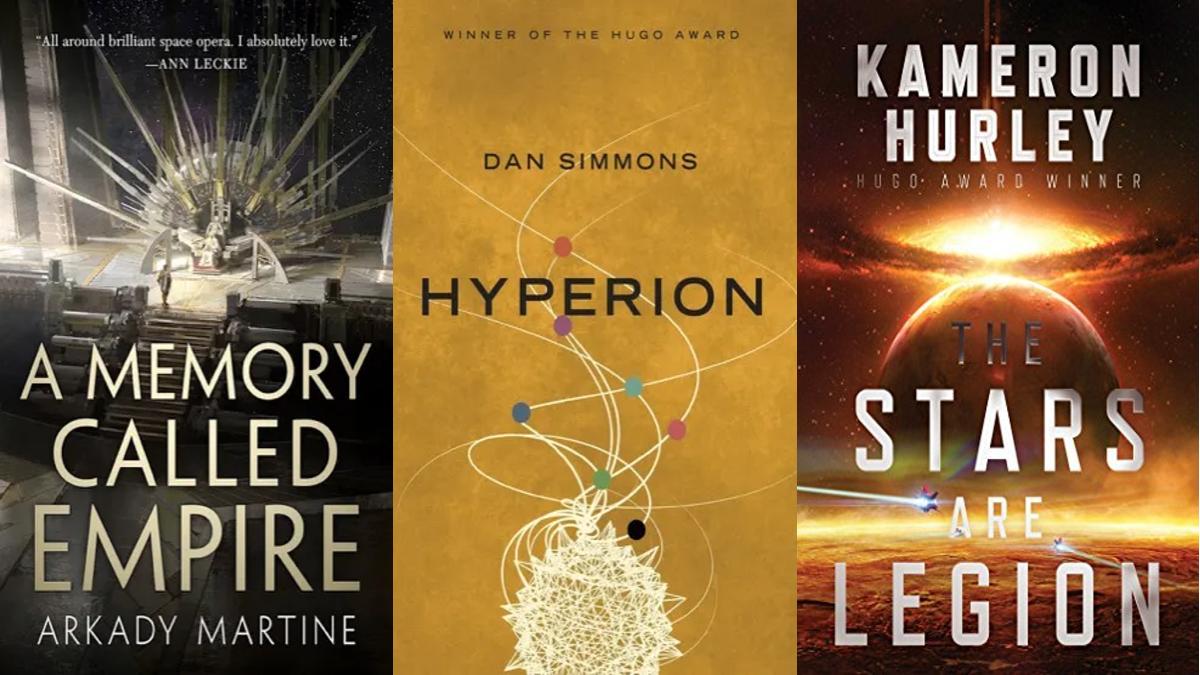
Giant worms. God-Emperors. Gom jabbars. When it comes to sci-fi, nobody does it quite like Dune. When Frank Hebert’s weird anti-chosen one epic first hit the shelves in 1965, who woulda thunk it would have inspired countless fantasy and sci-fi stories to follow? It’s almost as if a covet order of murderous space nuns orchestrated Dune‘s success from the very beginning, but surely the Bene Gesserit couldn’t be that influential… could they? If you or a loved one has been brainwashed into gobbling up fantastical space operas, here are 10 sci-fi and and fantasy books to read in order to sate your ravenous, Shai-Hulud-esque hunger for more.
Gideon the Ninth

Tamsyn Muir’s Gideon the Ninth is just Dune with gothic space lesbians – a vast improvement on the original. Set a faraway star system where nine plant ruling Houses compete for the favor of an undead Emperor, this emo epic follows Gideon Nav, an indentured servant to the sepulchral Ninth House and its shadowy young heir Harrowhark. In order to win her freedom, Gideon is tasked by Harrowhark to compete alongside her in a series of necromantic trials hosted in a decaying mansion – where the winner will ascend to undead godhood. The result is a murder mystery tale rife with unspoken queer longing under Hot Topic levels of mascara. We all shopped there once, and this novel will make you want to do it again – in service of the Emperor, of course.
Hyperion
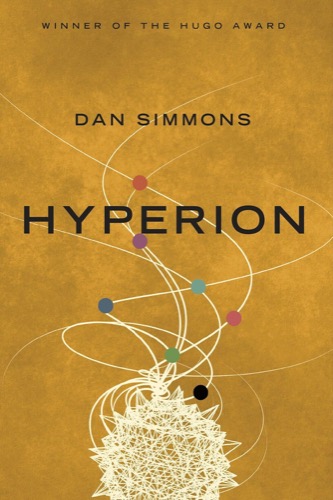
When discussing the most celebrating space operas of all time, Dan Simmon’s Hyperion is guaranteed to be mentioned in the same breath as almighty Dune. A sci-fi adaptation of Geoffrey Chaucer’s The Canterbury Tales, the story follows seven pilgrims on a journey to the mysterious planet of Hyperion, home of the mystical Time Tombs said to be able to grant heart’s desire. The Tombs are guarded by a terrifying creature known as The Shrike, named for its penchant for impaling its victims on spikes like a certain species of real world avian sociopaths. Each pilgrim has a different motivations for visiting The Tombs, ranging from romantic, paternal, to utterly self involved. If you’re looking for a high drama soft sci-fi that gets wibbley-wobbly with time like Frank Hebert’s work, Hyperion and its sequels can’t be missed.
A Memory Called Empire

Got a thing for space empires? I’ve got a thing for you. A Memory Called Empire by Arkady Martine is the story of ambassador Mahit Dzmare – a diplomat from an independent mining station sent to forge a relationship with the interplanetary Teixcalaan Empire. Considering that the last ambassador to Teixcalaan died under mysterious “probably murder” circumstances, Mahit has every reason to be cautious. Implanted with the memories of her dead predecessor, Mahit attempts to bridge the gap between her homeland and an alien nation – with a little help from a local official for whom she’s beginning to develop some very sapphic feelings. Interested in Dune‘s interplanetary political crises but wish Frank Herbert solved them with cultural understanding and a dash of lesbian love? A Memory Called Empire is for you.
The Fifth Season
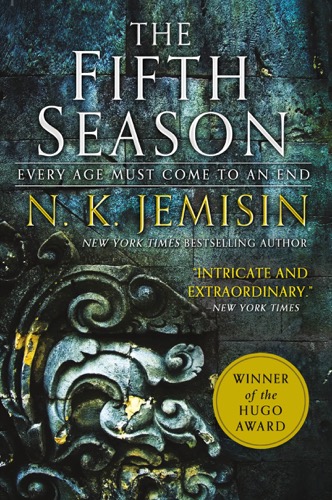
If your favorite part of Dune is the relationship between a people and a planet that wants them dead, N.K. Jemisin’s The Fifth Season is a must read. Set on a vast supercontinent known as The Stillness, civilization is ravaged by climate cataclysms called “fifth seasons” that arrive with the fury of a great-great grandmother storm on Arrakis. Unlike Dune‘s storms, the last fifth season was the result of a sentient being: an energy manipulating “orogene” of inconceivable power. In the wake of total climate catastrophe, three orogene women must struggle to survive in a society that hates and fears them for their supernatural abilities. Love survival stories about people with psychic powers? If you were into Paul and his mother’s tale of tenacity, you’ll be thrilled by this one.
The Left Hand of Darkness

The Left Hand of Darkness by Ursula K. Le Guin is essentially Dune without all the explosions – one man’s attempt to relate to a culture entirely alien from his own. Gendry Ai is an emissary of the Ekumen, an interstellar federation of planets, sent to make contact with the isolated world of Gethen. The people of Gethen are ambisexual, and only take on sexual characteristics during a brief monthly fertility period called kemmer. As a result, their society lacks human concepts like war and gender binaries, though Gethen is not without its own deadly brand of social peril. After a series of cultural missteps, Genly and a Gethenian diplomat are made social pariahs, and the pair must depend on one another in order to survive. If Paul and Chani had to make their sexual tension filled journey across frozen tundra instead of burning sands, you’d have this novel.
The Warhammer 40k Series
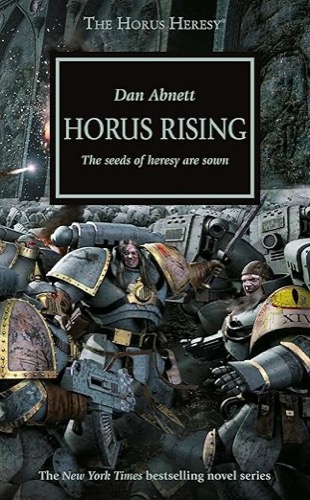
The Warhammer 40k series is a grimdark homage to Dune, a library’s worth of tomes centered around intergalactic empire struggling to live on in a bleak future. The star spanning Imperium of Man once lived in a golden age under the leadership of a supernatural God Emperor, but fell to rot and ruin after the Emperor was betrayed by one of his closest allies. A shell of its former glory, the Imperium has become an authoritarian theocracy hellbent on eradicating alien life. To be fair, most of the aliens in the Milky War want to stick humanity’s collective head on a spike, and as a result mankind has become a militaristic mishmash whose sole focus is war. It’s basically deep series Dune but with space demons and alien cyborgs, kept in check by the dwindling psychic power of humanity’s undead god.
The Book of The New Sun
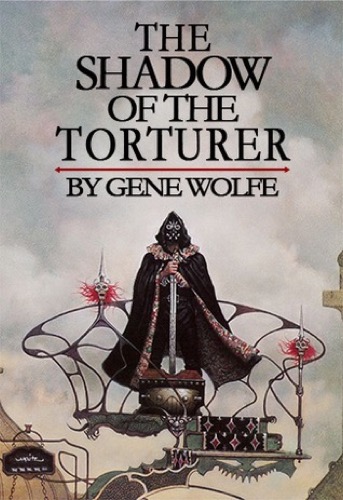
Gene Wolf’s The Book of The New Sun is a sneaky sci-fi series wearing the Groucho glasses disguise of high fantasy. Set in a far future world built on the remnants of an advanced technological past, the story revolves around Severian, a torturer exiled from his guild for showing mercy to a captive. Armed with nothing but his executioner’s sword and his last remaining braincells, Severian has to make his way in a world full of tech-harnessing wizards, ancient AI, and godlike alien beings pulling the strings from dimensions unknown. A heady blend of science and mysticism, easy to swallow for any Dune fan.
The God Emperor of Dune
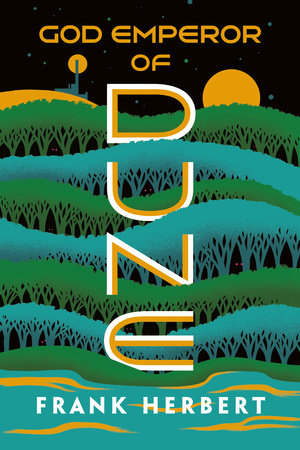
When reading Frank Hebert’s Dune, most people stop at, well, Dune. Arguably the best in the series, Frank Hebert’s first novel is the most easily accessible to the average reader. It’s a subtly subversive “chosen one” tale turned on its ear, a fresh take on the familiar. The later books in the series, specifically The God Emperor of Dune, represent Hebert’s dive off the narrative deep end – he jumps the sandworm (and turns a character into one). Set thousands of years after Dune, the novel revolves around Paul Atreides’ son Leto II, who has ruled the universe for 3,500 years as a human/sandworm hybrid. Now in control of all spice production and served by a string of Duncan Idaho clones, Leto II has the power to transform the universe into something completely unrecognizable – unless his enemies transform him into fish food first.
The Stars Are Legion
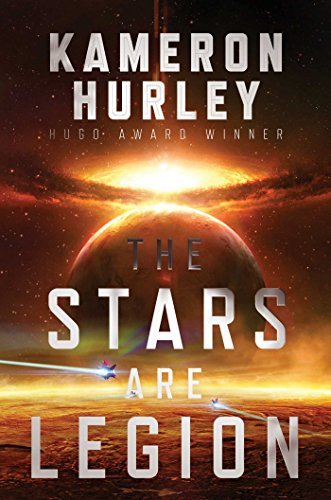
The Stars Are Legion by Kameron Hurley is what would happen if you took all the competing Houses of the Dune series, turned all their members into women, and crammed them into a fleet of biological starships fighting a never-ending universal war. Each of these fully self-sufficient world ships are led by a matriarchal clans, who compete with one another for resources and dominance. Trapped on one of these ships is Zan, a woman with no memory, who is told that she is a chosen one who will someday lead her ship out of the fleet toward salvation. It’s a grim and gory read about a female messiah figure fighting for her place in the universe, who will either break the cycle of violence (as Paul hoped) or continue it (as Paul did).
Ancillary Justice
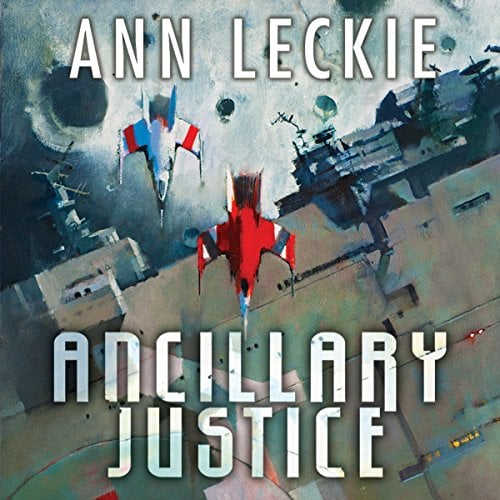
Ancillary Justice by Ann Leckie is the story of the star spanning Radch Empire, whose aggressive expansion is empowered by AI sophisticated enough to command entire fleets of starships at once. These AI sometimes pilot human bodies known as “ancillaries”, which they use as ground troops in their interstellar conquests. The novel concerns an AI named Breq, who awakens trapped inside a single ancillary in the wreckage of a former fleet. Desperate for answers and revenge, Breq goes on an interstellar quest to find the cause of her fleet’s destruction, leading her to question her relationship to an empire for whom she sweared loyalty. It’s Dune if Paul was a genderqueer robot wrestling with notions of power and morality, a servant of an empire crumbling from within.
Have a tip we should know? [email protected]







